General Ecology
Habits of Ecological Significance
Crinoids are group of organism that seem to always be present in a marine system but never define it, unlike anthozoans’ (Boolootian, 1966). Instead crinoids play home to a distinctive commensal community (some times referred to as a parasitic). The community includes a variety of crustaceans and annelids. The organisms found within crinoids have derived characteristics to match the aboral surface of the crinoid. Myzostomids are a type of Annelid that have highly adapted their morphology to match the host crinoid (myzostomids can only be found in crinoids).
Crinoids are not particularly preyed upon because of the toxins they produce in their mucus. Some fish species do prey upon them but aren’t a dominant or essential part od their dietary requirements (Boolootian, 1966, Hendler et al., 1995). Nothing in particular wants to eat crinoids but crinoids on the other hand enjoy a wide range of food including their own kind. They mainly feed on plankton and nekton using a sieve system (Refer to Life History and Behaviour for more information).
Crinoids are found in shallow coral reef flats to depths greater than 2000m. There are quite a few species that are sympatric and colour-morphs making the Comanthus class particular hard to distinguish between species. Fortunately, the Comasteridae family has a tight link with the habitat it is found. Comasteridae are a tropical family of crinoids that are found between the depths of 1m and 70m. Large populations of Comasteridae can be found in the coral rubble regions of on reef flats (Fig. 1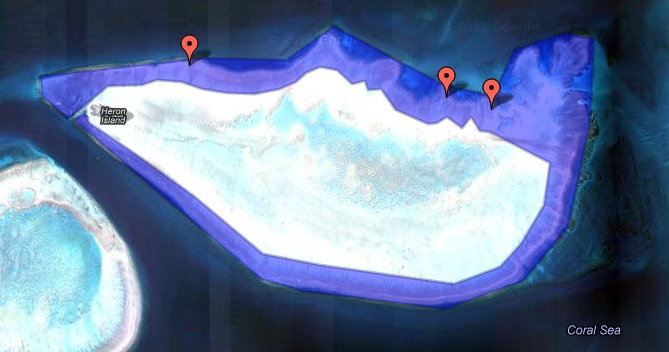 ). ).

Figure 1: Coral rubble region on Heron Island (blue). Collection site for specimens (red markers). Adapted from Google Maps.
The physical morphology of crinoids are directly linked to their habitat by the stress on which the environment places on them. Wave energy, temperature, salinity and light all play as a tool for natural selection. Comanthus gisleni is found on coral reefs between the lower side of the reef crest and the coral rubble region on the reef flat (fig. 1 - blue). There morphology directly reflects this with short robust ciri for clasping during high water flow and wave energy. Other crinoid use there ciri to hold them above the sediment – increase there surface area, instead of clasping (fig. 2). Their ability to with stand salinity changes and high light intensity enable them to survive in the intertidal proportion of the reef.
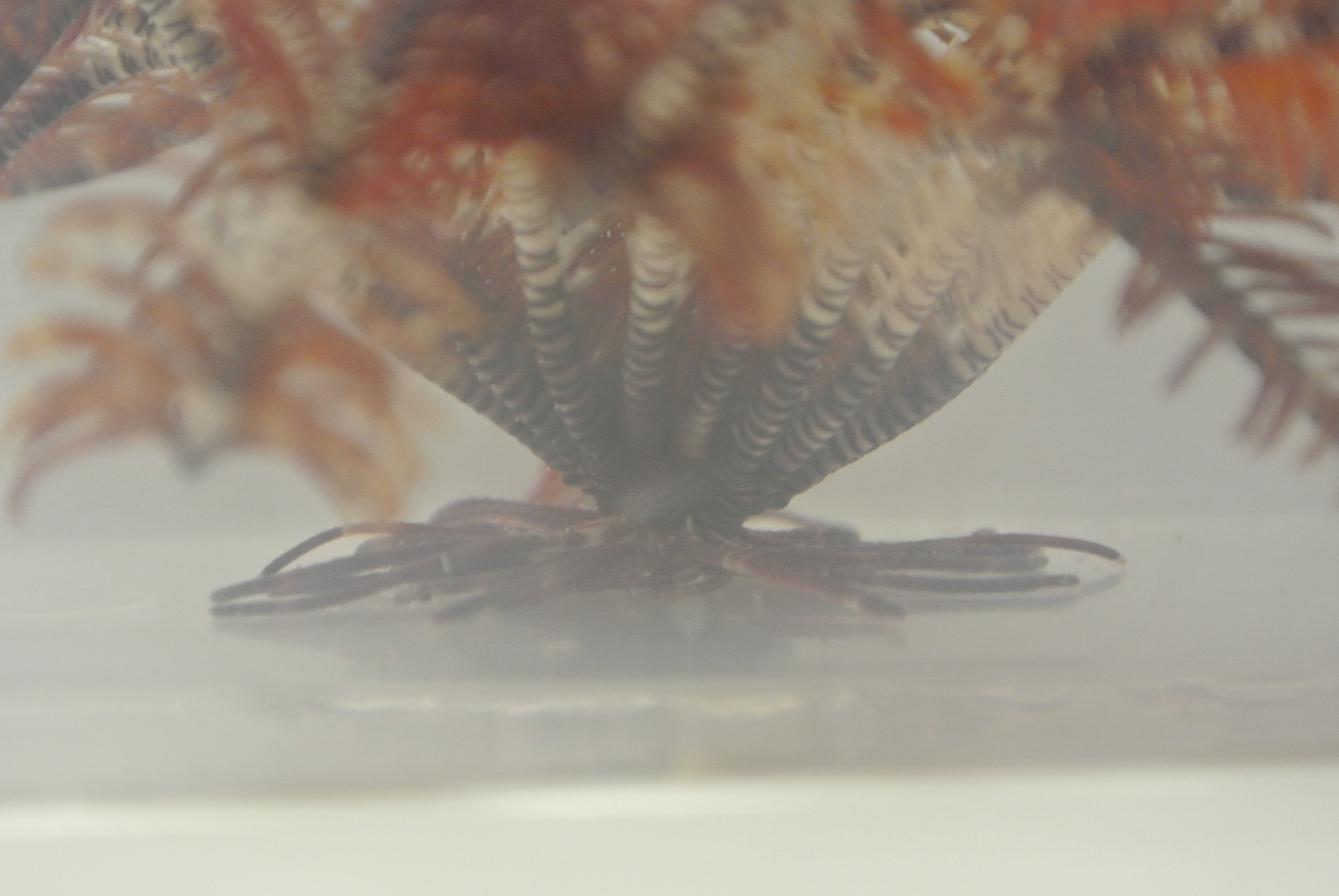
Figure 2: Long fine ciri found on red and cream crinoid. The large surface to volume ratio enables this to stand on soft substrates without sinking.
Running Rampant in Crinoids
The following is a collaborative experiment that was conducted with Shunting Jin. A further study was done by Samantha Eady on the myzostomids found in in the different crinoid species, please refer to their research for further results.
Experiment 1: What lives in a Crinoid?
Primary aim: What lives in a Crinoid? Catalog and describe what organisms are found within one crinoid specie.
Secondary aim: Are there more organism within crinoids with more arms? Compare Comanthus gisleni and Comathus parvicirrus.
Methods:
Primary aim methodology:
Each crinoid specimen was relaxed using magnesium chloride (MgCl) to gain access to the tegmen (central disc). All organisms that were present and visible with naked eye or a dissecting microscope were collected and fixed for further description.
Secondary aim methodology:
Basic morphological measurements were taken of each individual crinoid– arm length (rays).
Assumptions:
- The crinoid or epiphytic community don’t expel from the crinoid because of stress induced from collecting or holding in tanks.
- All the organism were still present when inspected on 1 day after collection
Results:
Table 1. Organisms presents in two green crinoid species. 'x' represents one individual found and
the number is the number of individuals of that species found.
|
Epiphytic Community
|
Comanthus parvicirrus
|
Comanthus gisleni
|
|
1
|
2
|
3
|
4
|
5
|
|
Deep Purple Shrimp (snapping shrimp)
|
x2
|
- |
- |
- |
- |
|
Green and Yellow Striped Shrimp (snapping shrimp)
|
x2
|
- |
x2
|
- |
x2
|
|
Myzostomidia (Yellow & Green)
|
x1
|
- |
- |
- |
- |
|
Myzostomidia (Maroon)
|
- |
- |
x1
|
x1
|
- |
|
Eggs
|
x4
|
- |
- |
- |
- |
|
Copepod
|
- |
x6
|
x4
|
x3
|
- |
|
Isopod
|
- |
- |
- |
x1
|
- |
|
Scale Worm (Maroon)
|
- |
x1
|
- |
- |
- |
Comanthus gisleni and Comanthus parvicirrus, like all other crinoids have a community of creepy crawlies that live in symbiosis with them. Within the two crinoid species sampled - decapod eggs, annelid (scale worm), decapods (shrimp), copepod, isopod and myzostomids were located (table 1).
There were two decapod species found, one species that was as larger as central disc and could only inhabit the central area because of its size (fig. 1). The second species, a snapping shrimp, was an extreme specialist to C. gisleni, it's carapace colouration matches the external surface (aboral surface) of the crinoids pinnules (fig. 2). Furthermore, the second species matches the average length of the pinnules (~1cm), giving it a further specalisation to C. gisleni. Shrimp eggs were found on within the C. parvicirrus (fig.3). A female snapping sprimp (species no.2) was found within this same crinoid with eggs still clutched between claspers (fig. 2).
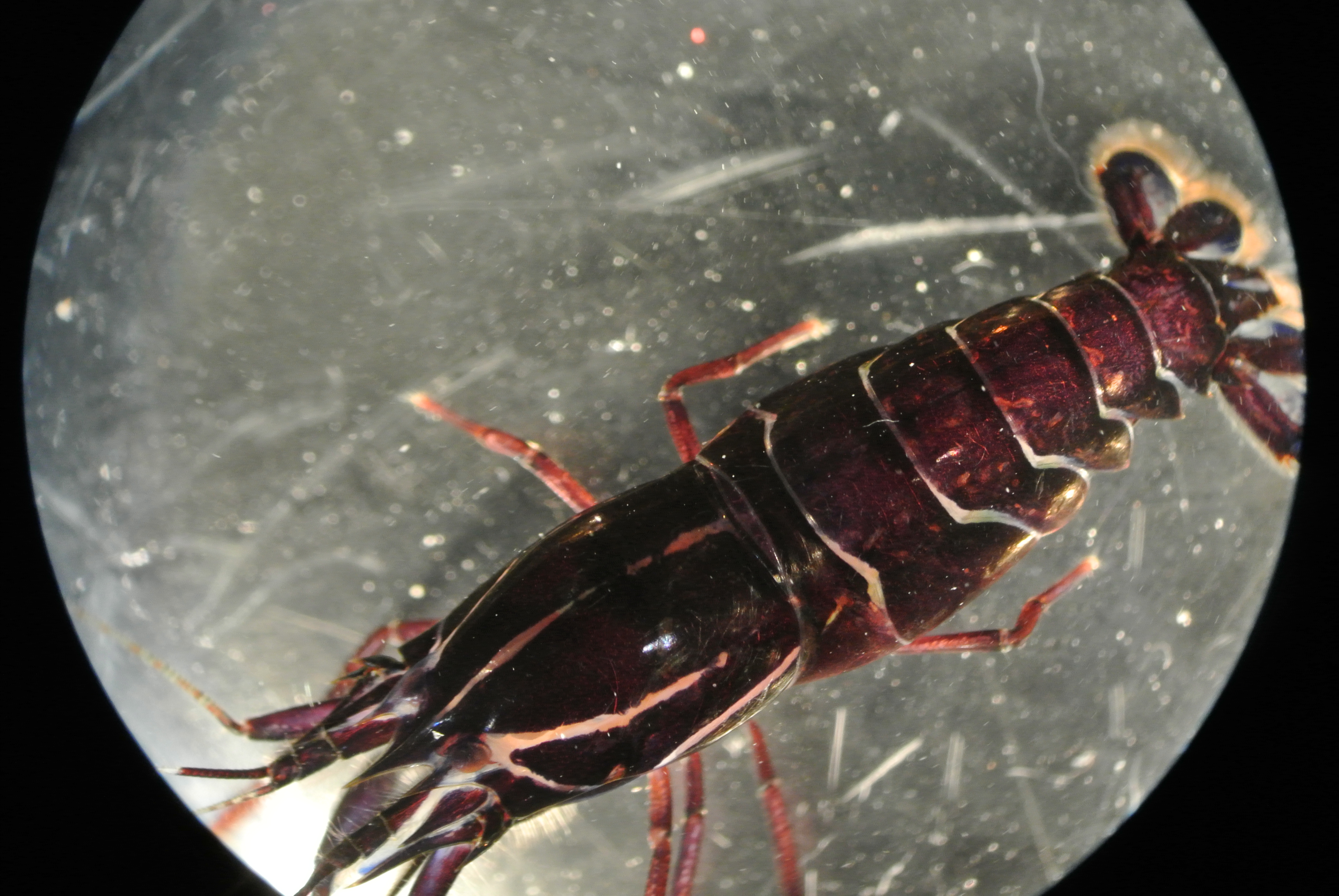 |
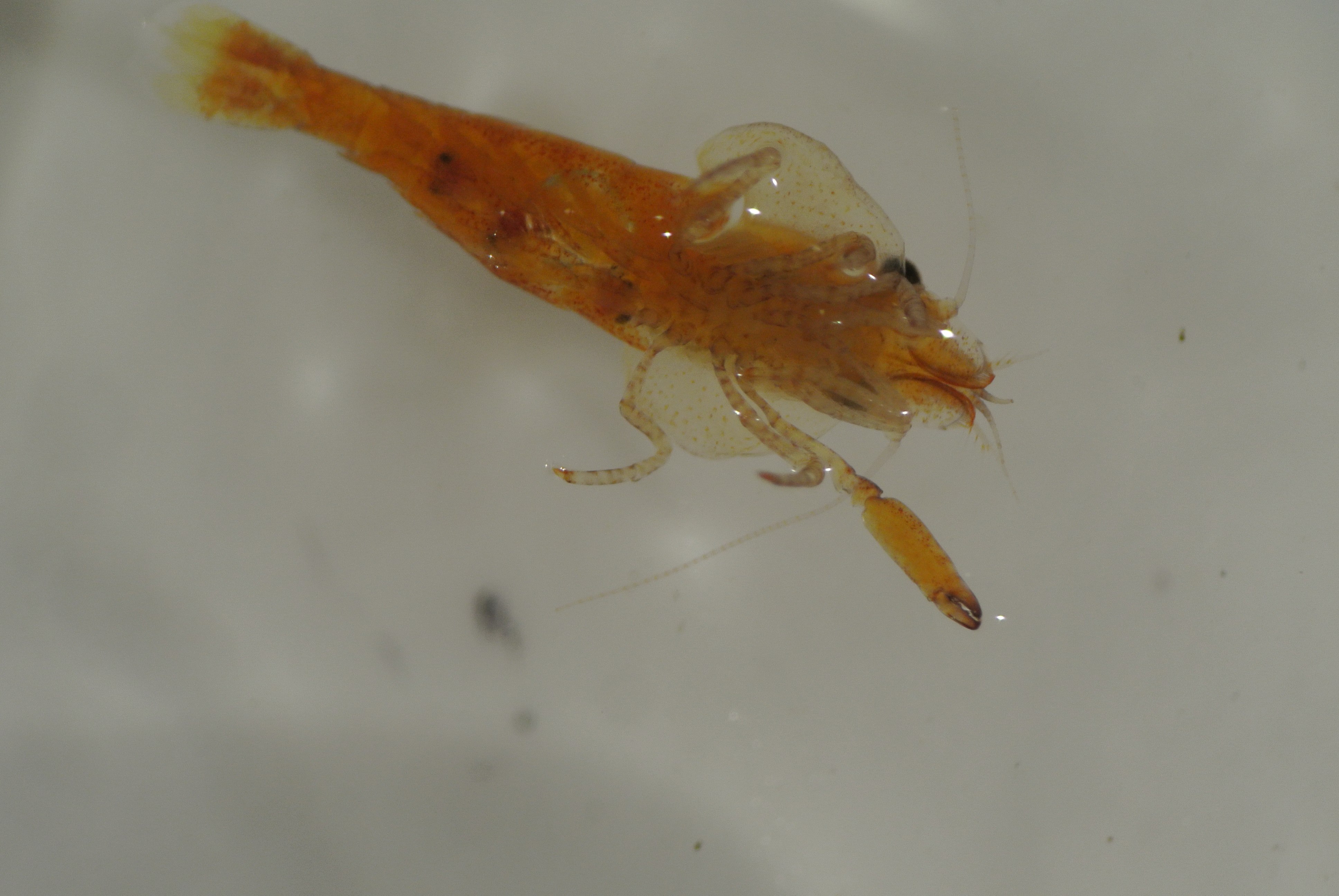 |
Figure 1: Comanthus parvicirrus purple snapping shrimp.
|
Figure 2: Small snapping shrimp with three eggs still present within claspers.
Note: the colouration of the shrimp has changed from the fixing agent bleaching it.
|
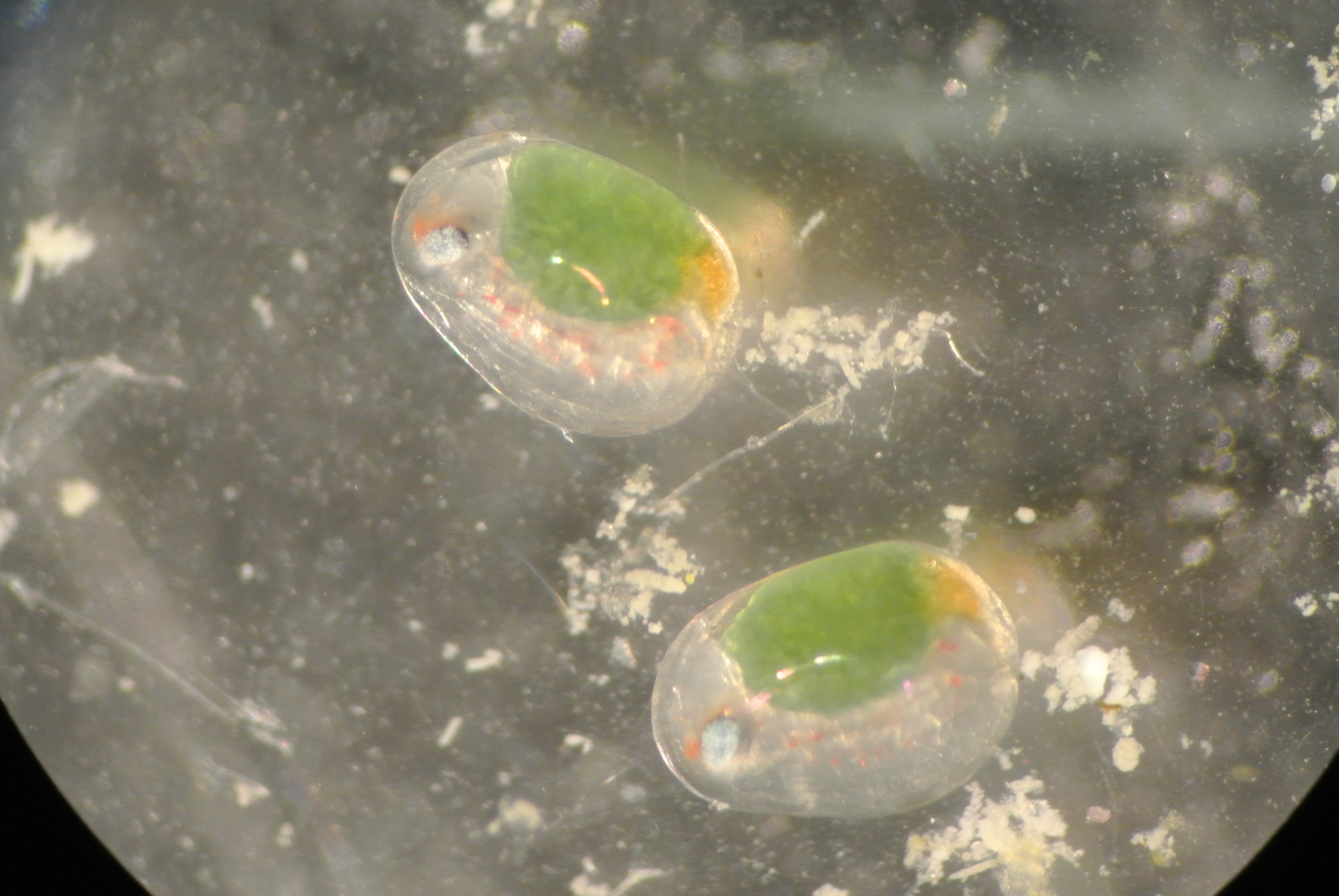
|
|
Figure 3: Decapod eggs found within Comathus parvicirrus
|
|
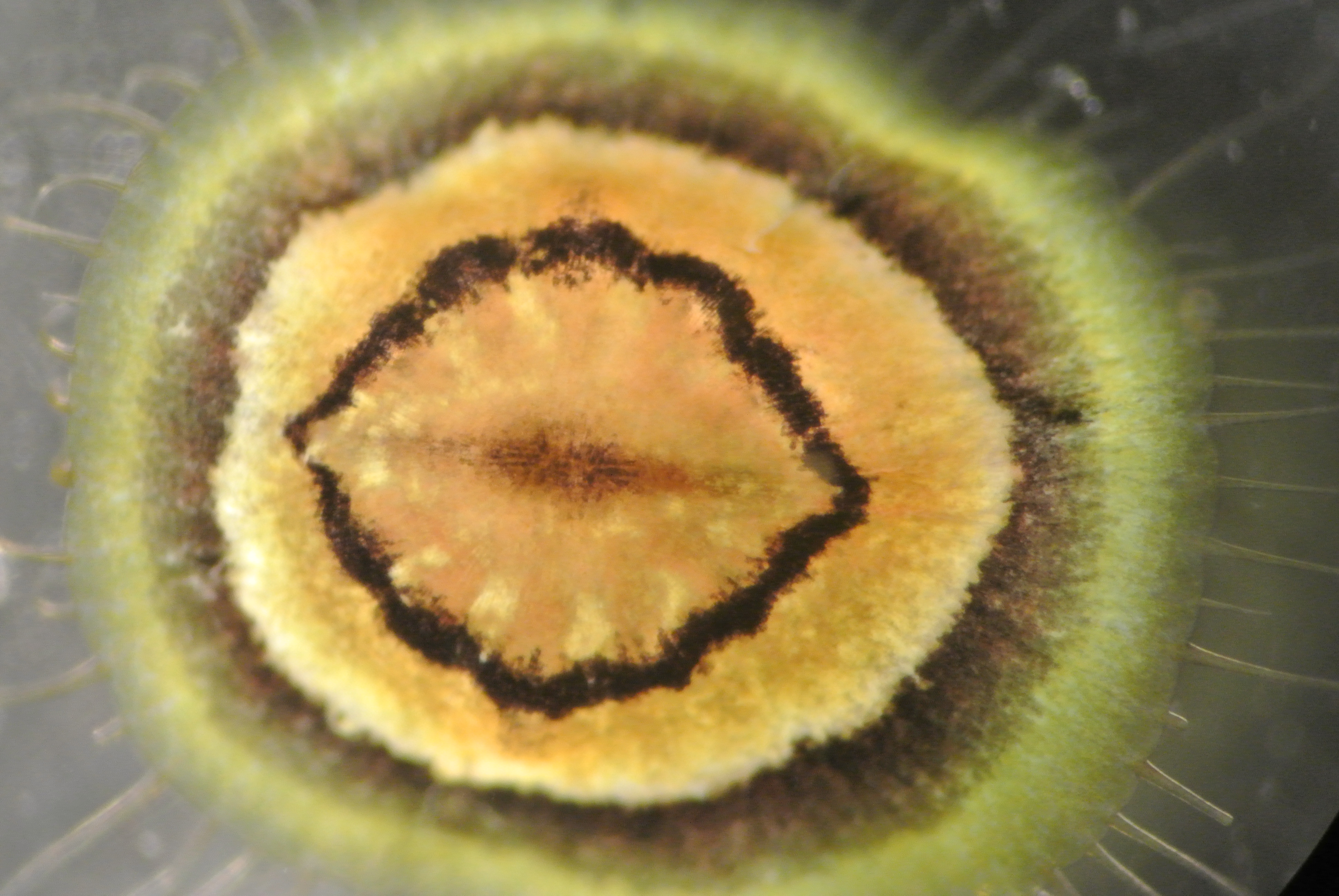
|
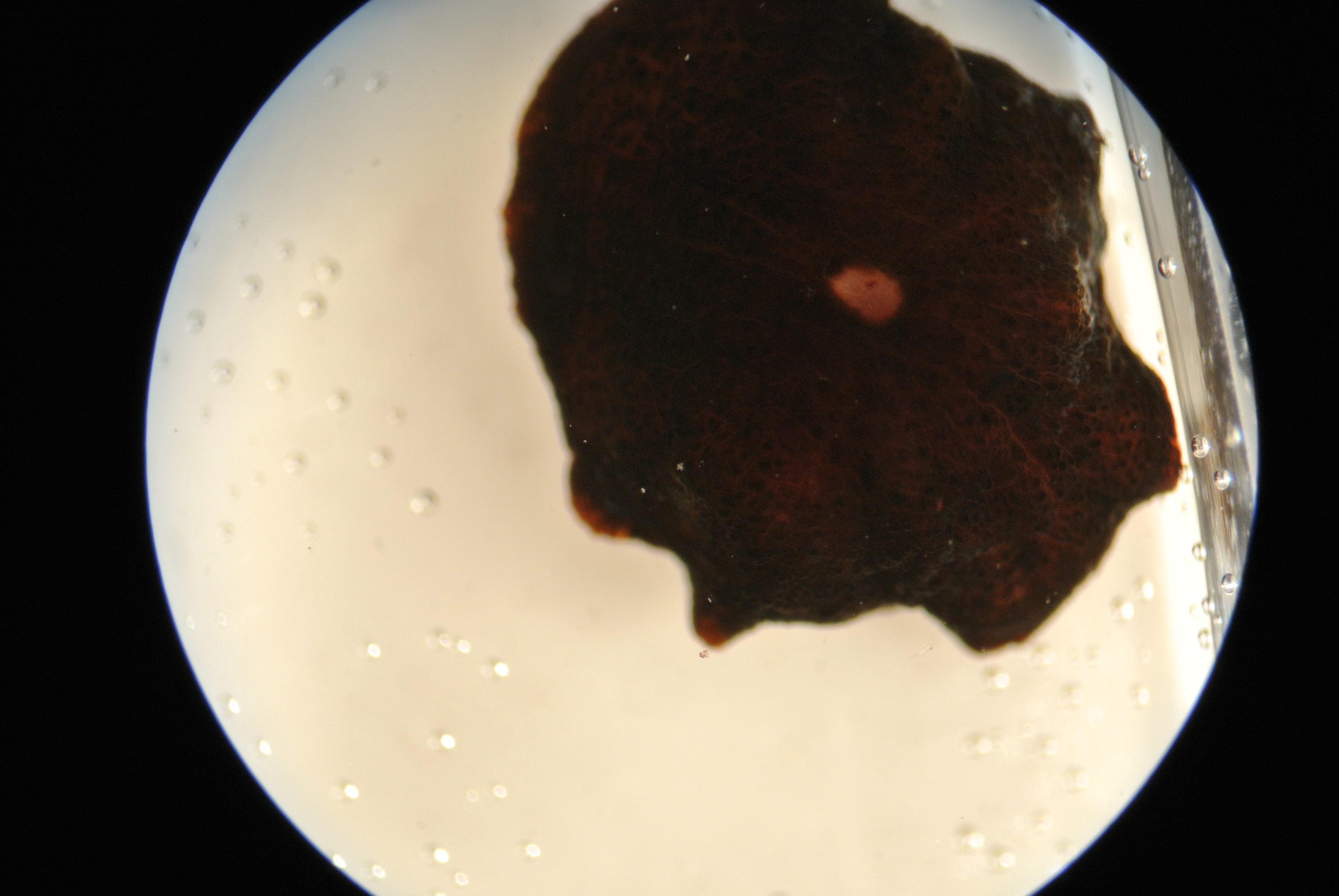 |
Figure 5: Two myzostomid species (Left Comanthus parvicirrus and
|
right Comathus gisleni)
|
Similarly to the decapod species two myzostomid species were found living inside the two Comathus species. The C. parvicirrus specie of myzostomid had dorsal colourations that matched the spots of the central disc (tegmen) and the pinnules of the arms. The C. gisleni specie was a distinct maroon colour that match the colouration of central tegmen.
Copepod and isopod were also found but there presence within the C. gisleni was thought to be in a pasasitic form, not symbiotic (Fig. 6). This was thought because of observation made about the reaction of the crinoid to the individual parasites swimming near the food canals. The pinnules moving in an aggressive or defensive action to ward off them entering the canals.
Figure 6:Image of the isopod found within the Comanthus gisleni.
Table 2. 'Epiphytic community-arm" relationship
|
Species
|
Specimen
|
No. Legs
|
No. Organisms
|
No. Species
|
|
Comanthus parvicirrus
|
1
|
39
|
9
|
4
|
|
Comanthus gisleni
|
2
|
21
|
7
|
2
|
|
3
|
20
|
7
|
3
|
|
4
|
24
|
5
|
3
|
|
5
|
25
|
2
|
1
|
A comparison of C. parvicirrus and C. gisleni showed that there was a difference in the number of organisms and species diversity, between the two species. However, not to a significant level. A within species comparison (C. gisleni) had an proportional relationship of number of arms to number of individual epiphytic organisms.
Experiment 2:Are Crinoid have photo taxis or just prefer cover?
Primary aim: define if crinoids prefer cover or shade.
Methods:
To distinguish between if the Comanthus gisleni prefers cover or shade, an experiment was set up matching fig.7.
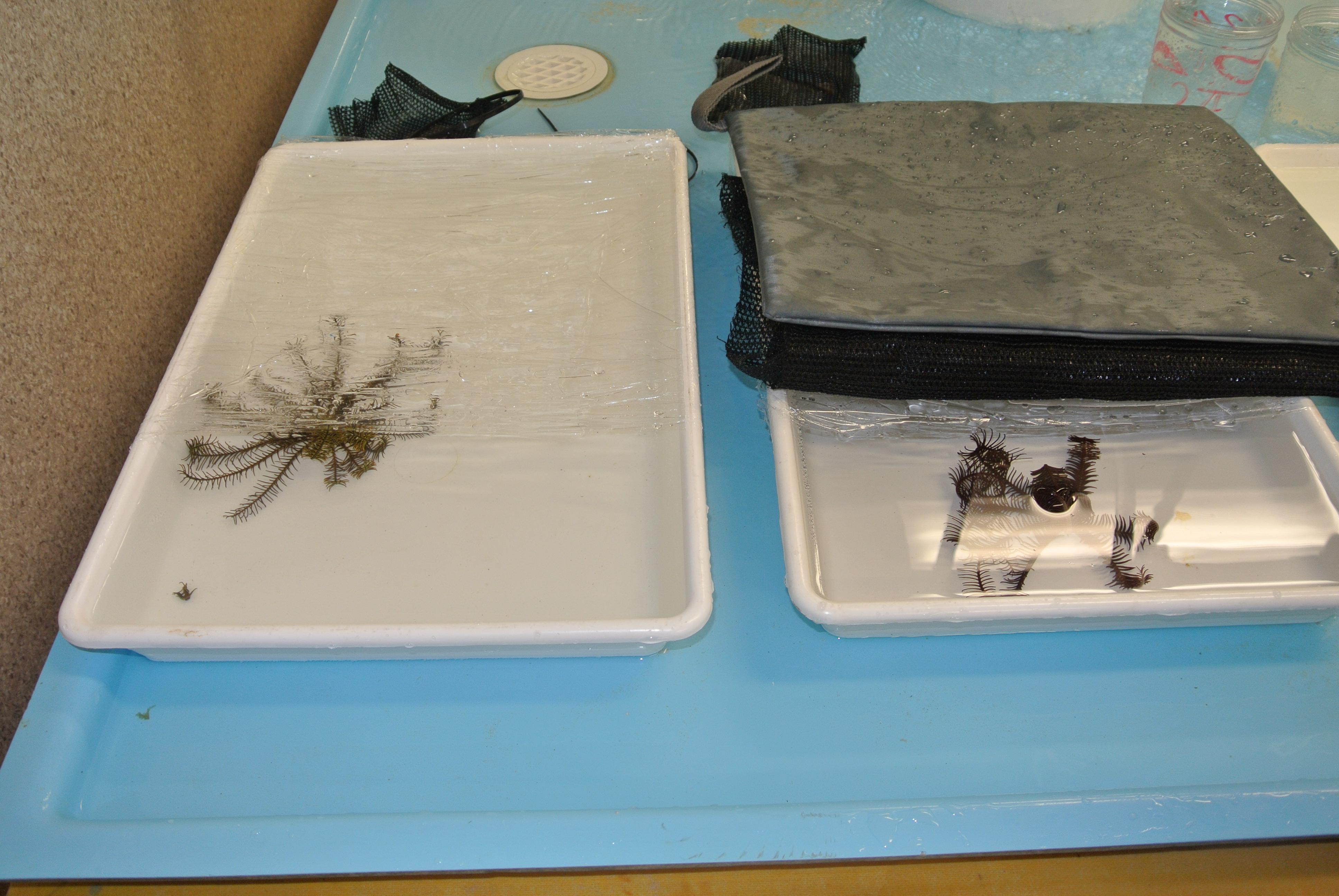
Figure 7: Comanthus gisleni in the cover trial and a third Crinoidea species in the shade trial.
Results:
The average time taken for Comanthus gisleni to react to the cover treatment was 4.6mins. Time take for the second treatment on average was double (8.7mins). Specimen four didn’t complete the task within the allotted time (10min period), for all runs or either treatments, which increased the average time taken to react to the treatments for Comanthus gisleni.
Observation:
The fourth Comanthus gisleni specimen didn't react typically because the tegmen had been separated from the main body during the untangling of multiple crinoids in aquaria.
|